
Faster, Better
Teacher Evaluations
Teacher evaluations are necessary, but they often don't feel worth the effort—and who has time to put in even more effort?
To become more than a formality, teacher evaluation needs an overhaul—but what can we change while respecting established contracts and policies?
In Evidence-Driven Teacher Evaluation, we focus on our task itself: how we observe, document, discuss, and rate teacher practice.
We can follow the existing rules, but get superior results.
We have the opportunity to conduct dramatically better observations and evaluations in less time, through a combination of time-tested and innovative approaches, aided by new technology.
At the heart of this approach is evidence—that's why we call the whole process evidence-driven.
Evidence isn't a hammer—the proof we need for a "gotcha" evaluation. It's how we uphold our "Hippocratic Oath" as instructional leaders:
Seek first to understand, then to be understood.
Changing the way we think about evidence is the shortcut to faster, better teacher evaluations.

See, direct observation reveals only about 10% of the "iceberg" of teacher practice.
The remaining 90% is hidden beneath the surface—it's the invisible planning, relationship-building, and decision-making that make all the difference.
To see this hidden 90% of teacher practice, we need only talk with teachers—in a specific way.
Evidence-driven feedback conversations use observable evidence—the kind of low-inference notes you're already taking—as an entry point into conversations about the hidden elements of practice.
When combined with your teacher evaluation criteria, these conversations give us unprecedented insight into teacher thinking, allowing us to make sound evaluation decisions in less time than ever.
But technology also plays a role in helping us access our evaluation criteria, take timestamped notes, and write final evaluations in a fraction of the usual time.
Improve Teacher Retention
Evidence-driven teacher evaluations improve teacher retention in two ways.
First, they can provide targeted support for people who are struggling.
Second, they can build trust and commitment.
People quit because they don't feel successful, or because they don't feel supported.
Traditionally, the evaluation process is designed to rubber-stamp most people, and move a few toward dismissal—NOT to help and retain people.
But if we focus on evidence and expectations, new possibilities open.
We can use evidence to show people what they're doing right, and how to do more of what works (and less of what doesn't).
We can stop the adversarial tug-of-wars: "I'm Level 4" vs. "No, you're not"
We can get on the same page with people about where they are, and how to move to the next level.
Build Trust by Taking Practice Seriously
Too often, the evaluation process is both high-stakes and arbitrary—a combination that damages trust.
Leaders who see evaluations as the exercise of arbitrary judgment miss the chance to build trust and advance a shared vision for professional practice.
Evaluations don't have to be a tug-of-war between teacher and evaluator. Instead, they can be a collaborative, trust-building exercise that helps everyone get better.
Instructional leaders who follow the "Hippocratic Oath"—seek first to understand, then to be understood—take teacher thinking seriously, and build trust with each observation.
Evidence-driven feedback conversations have three "participants" coming together to discuss evidence of practice:
- The teacher
- The evaluator
- The evaluation criteria
By treating evaluation criteria as a third participant in the conversation, we can turn the tug-of-war into collaborative triangulation.
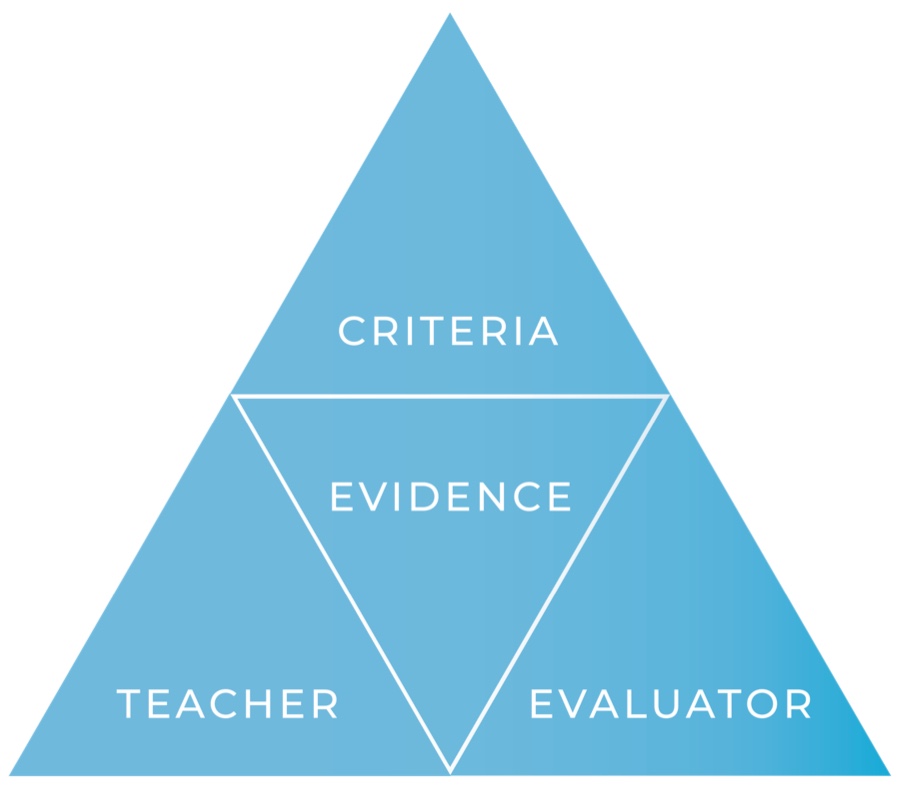
Final Evaluations with GSIR:
Generalization, Specifics, Impact, Rating
The ultimate test of your work as an evaluator is the argument you can make about a teacher's performance in each domain of practice.
If you can make a well-supported argument, aligned with the criteria and backed with evidence, you're in great shape. A complete argument has four parts:
- A generalization about the teacher’s practice in a specific area
- Specifics—evidence & examples supporting the generalization
- The impact of this practice on relevant outcomes, such as student learning
- The final rating in that specific area of practice—e.g. exemplary, satisfactory, developing, or unsatisfactory.
Building on Jon Saphier's (1993) CEIJ model, GSIR makes it easy to tell if you have the evidence you need, or if you're drawing conclusions that can't be supported.
To help you construct airtight evaluations, we've created the ultimate tool: the GSIR Final Evaluation Builder.

The GSIR Final Evaluation Builder is our drag-and-drop, multiple-choice, fill-in-the-blank tool for constructing evidence-driven final evaluations.
You supply the evidence, and the Builder supplies the language, so you can quickly find the descriptions that best fit the evidence.
Typically, the hardest parts to write are the generalization and impact statements. Thankfully, these statements don't need to be unique—they just need to be customized to fit the individual situation.
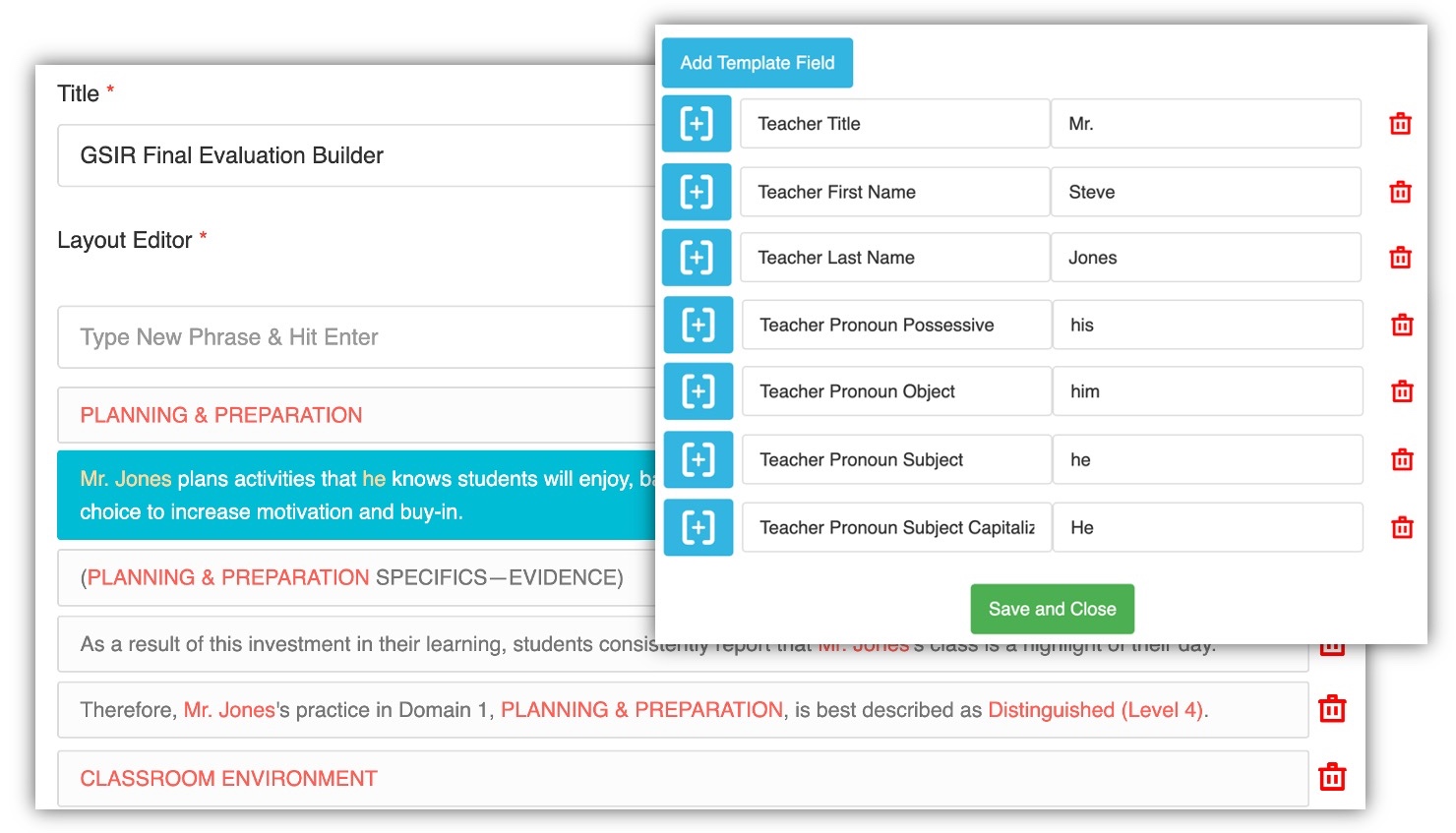
For example, the Builder includes the following Generalization statements about lesson planning—with the teacher's name and other details already filled into each phrase:
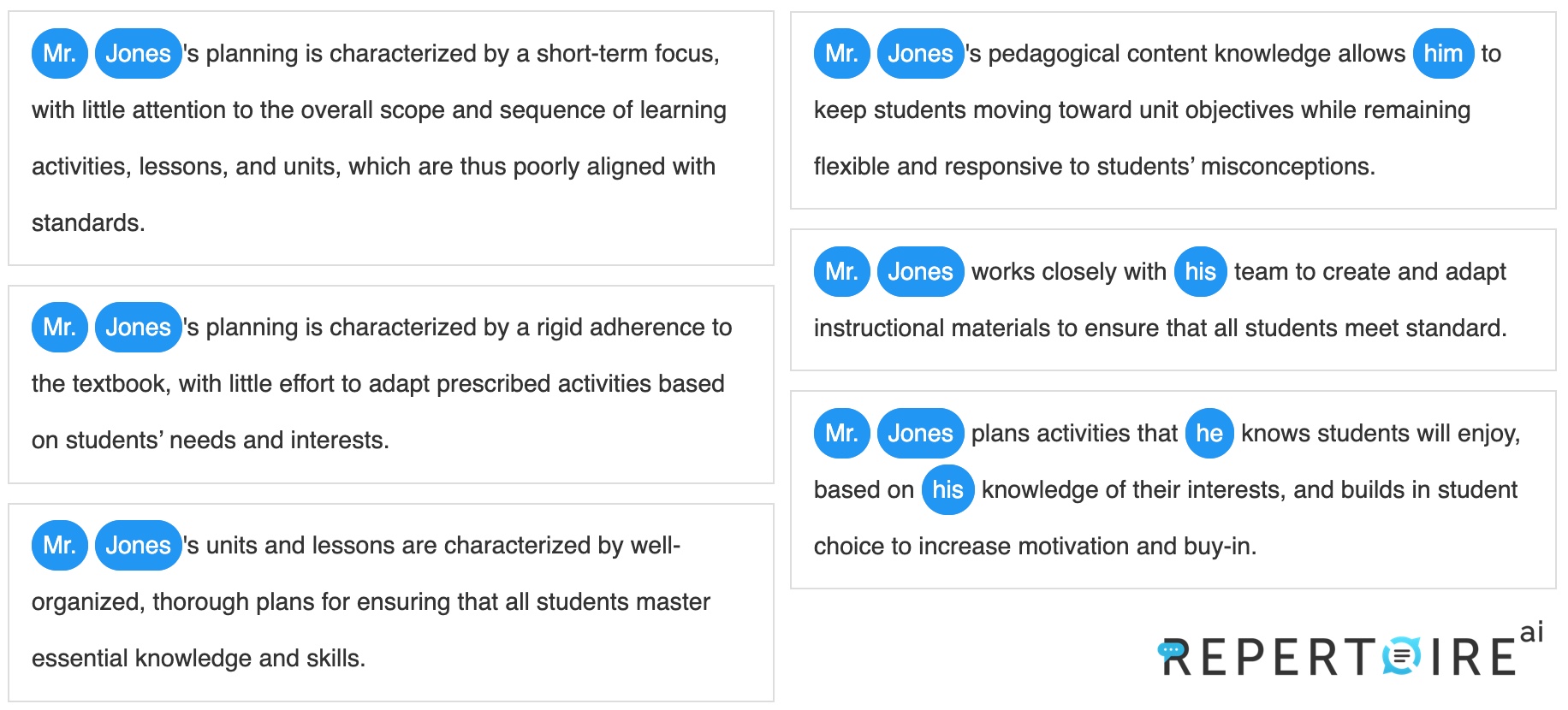
Simply choose the phrase that best fits the individual teacher—the writing is done for you. All you have to add is your evidence.
Plus, you can use our A.I. to generate even more custom wording to match each teacher's situation.
Evidence-Driven Observations with Repertoire
The GSIR Final Evaluation Builder is part of Repertoire, the professional writing app for instructional leaders.
Repertoire speeds up every stage of the observation and evaluation process, including:
- Taking low-inference notes, with automatic timestamps
- Writing flawless feedback using specific language from your evaluation criteria
- Producing airtight final evaluations with the Builder
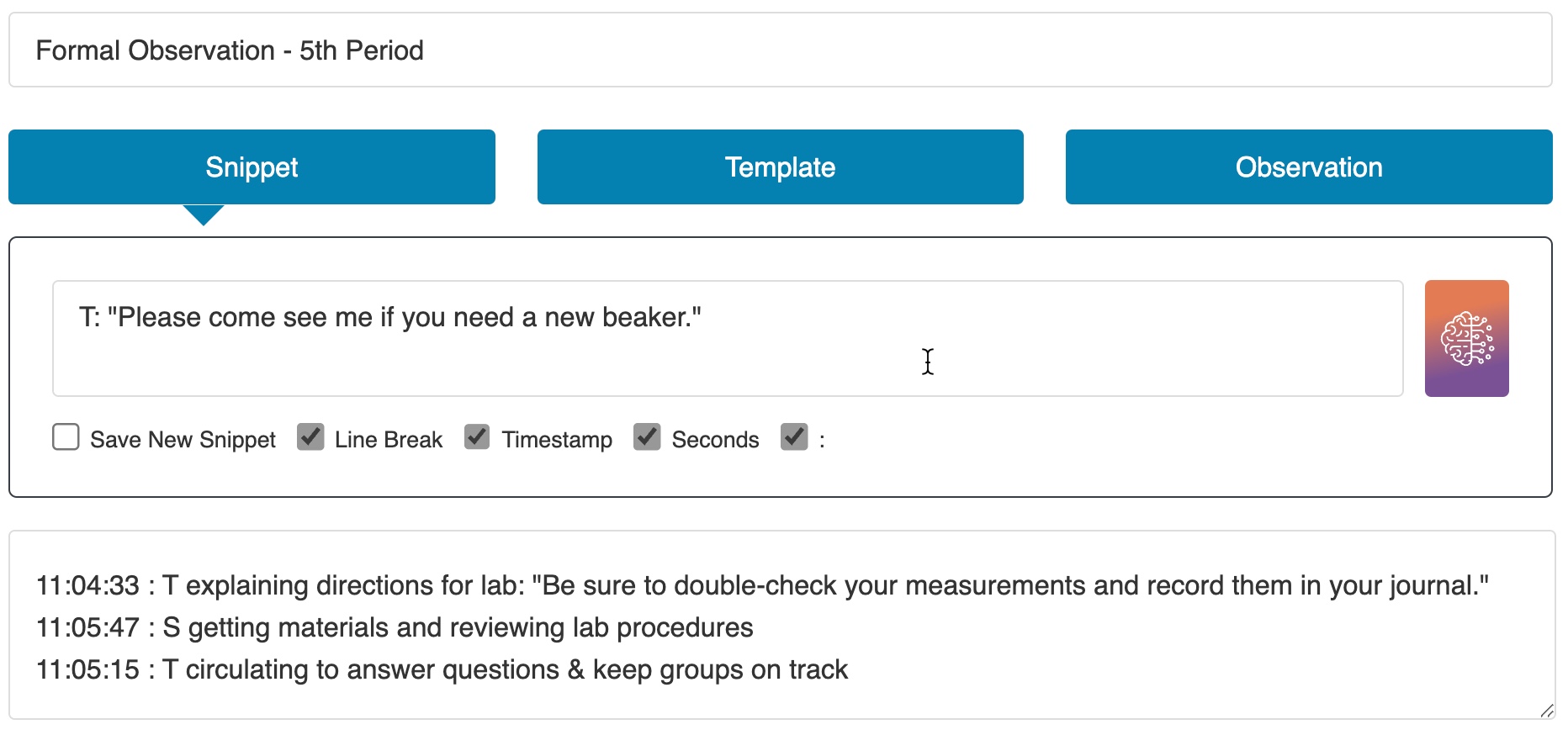
Repertoire's timestamp feature makes it easy to take evidence-rich, low-inference notes, so you can easily reconstruct the lesson's most important details in your postconference, written report, or final evaluation.
Pareto Optimization:
Prioritizing High-Risk Evaluations
It's essential to devote enough time to high-risk evaluations using the 80/20 Pareto Principle.
High-risk evaluations include teachers who are:
- Likely to receive an unsatisfactory rating
- Likely to resign at or before the end of the year
- Teaching a new course or grade level
To have enough time to handle these high-priority evaluations effectively, we need to free up time on low-risk evaluations.
How? By using the GSIR Evaluation Builder and other strategies you'll discover inside the program.
You'll also get a 1:1 consultation to identify your high-risk teachers and develop a plan for ensuring you've covered all the bases.
Our Process + What's Included



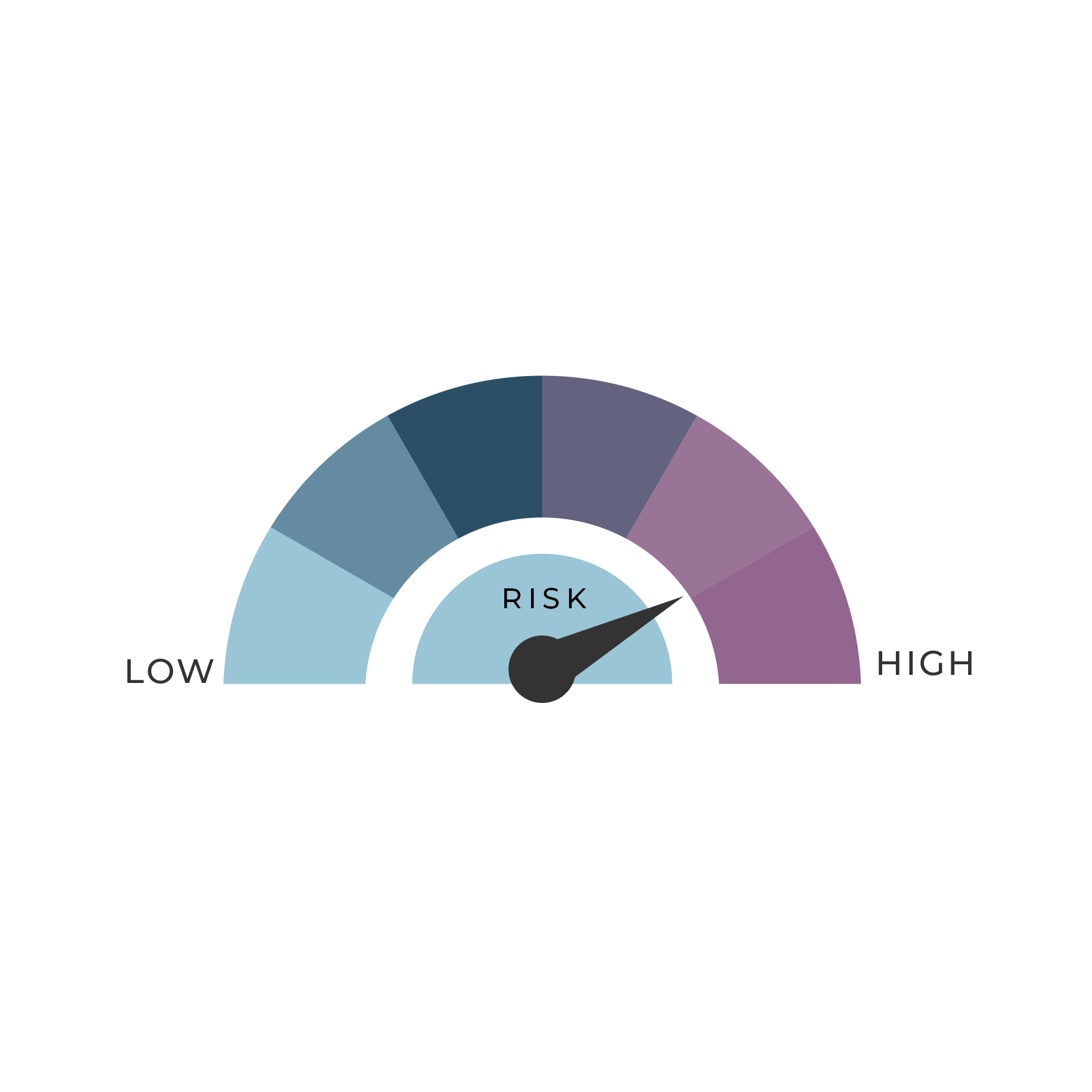

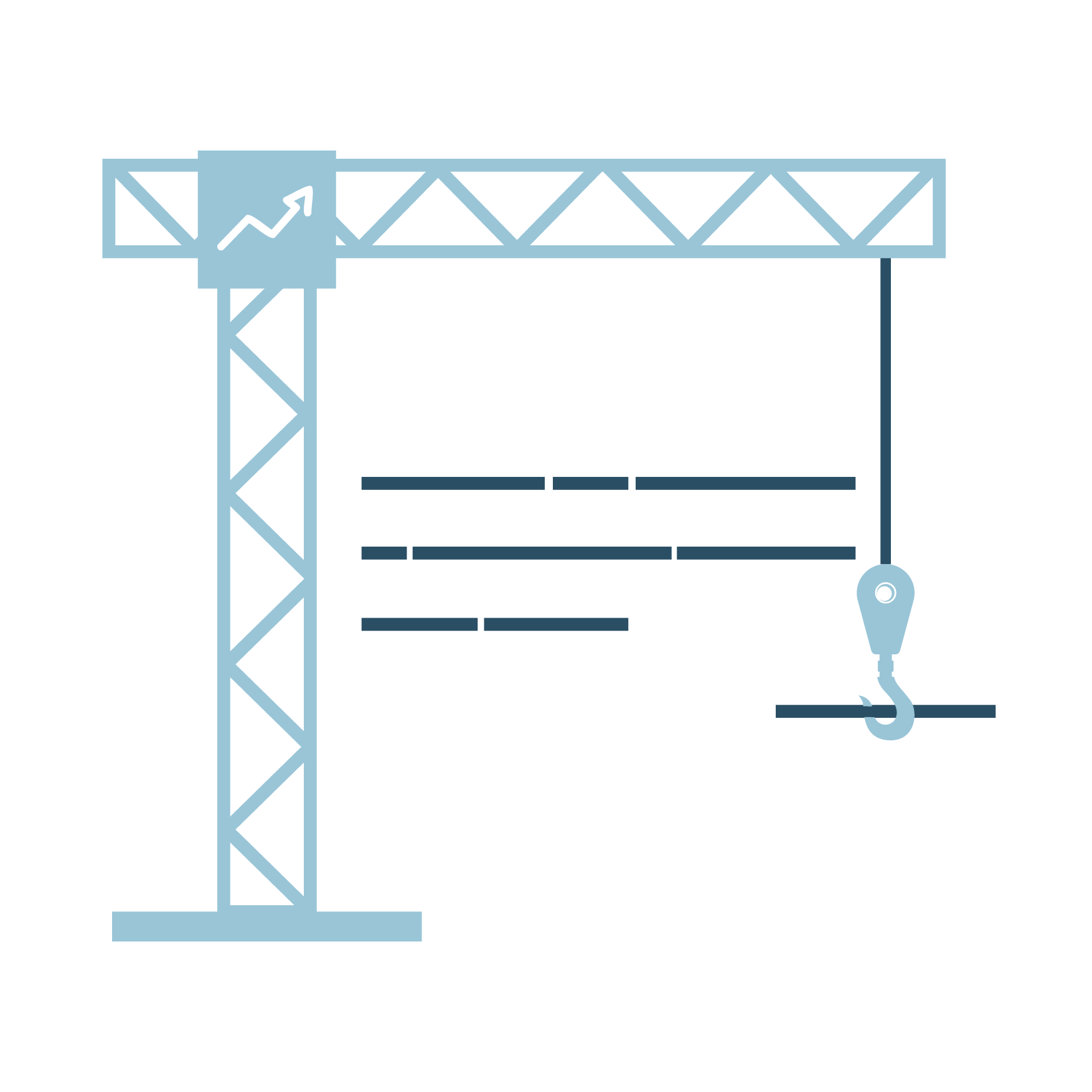
First, we’ll set up your evaluation criteria in Repertoire, and we’ll import your staff roster.
No tedious data entry–just send us what you have, and we’ll take care of the rest.
You can start using Repertoire immediately to take low-inference notes, provide criterion-aligned feedback, and assemble the evidence you need for rock-solid final evaluations.
We’ll help you get organized and work through your punchlist of remaining evaluation tasks, like meetings, observations, and paperwork—so you can meet all of your district’s requirements.
Next, we’ll talk about your staff and identify high-risk evaluations—people who are at serious risk of quitting or getting unsatisfactory ratings.
Then, we’ll develop a plan to provide the support each teacher needs, based on the strategies in Mapping Professional Practice.
Finally, we’ll sprint toward the finish line—an evidence-driven final evaluation for each teacher.
We’ll use the GSIR Final Evaluation Builder to make an airtight, evidence-driven case about each teacher’s performance, in a fraction of the usual time.
It’s fast because most of the writing is already done—just plug in specific evidence, pick from our multiple-choice phrase bank, and copy and paste.
Who Should Register?
The Evidence-Driven Teacher Evaluation Certification Program is designed for:
While this program focuses a great deal on supporting teachers in improving their practice, it is not designed for department heads, team leaders, or instructional coaches who aren't involved in the teacher evaluation process.
Learn At Your Own Pace—Lifetime Access

The Evidence-Driven Teacher Evaluation Certification Program includes timely live support throughout the year, as well as on-demand modules you can complete at your own pace.
No time now? Get right to work with our tools, and go through the modules at your convenience.
Your registration includes lifetime access to the entire program, including all future live support cohorts.
What You'll Learn in Each Module
Module 1
Goal-Setting for Teacher Growth
Module 3
Evidence-Driven Formal Observations
Module 5
Leveraging Time & Effort for Maximum Impact
Module 2
Instructional Frameworks as Growth Pathways
Module 4
Rating Teacher Performance & Writing Airtight Final Evaluations with GSIR
Bonuses
Further Tools & Training
Certification Program
The Evidence-Driven Teacher Evaluation Certification Program allows you to demonstrate your ability to provide effective instructional leadership through the formal evaluation process
You'll receive:
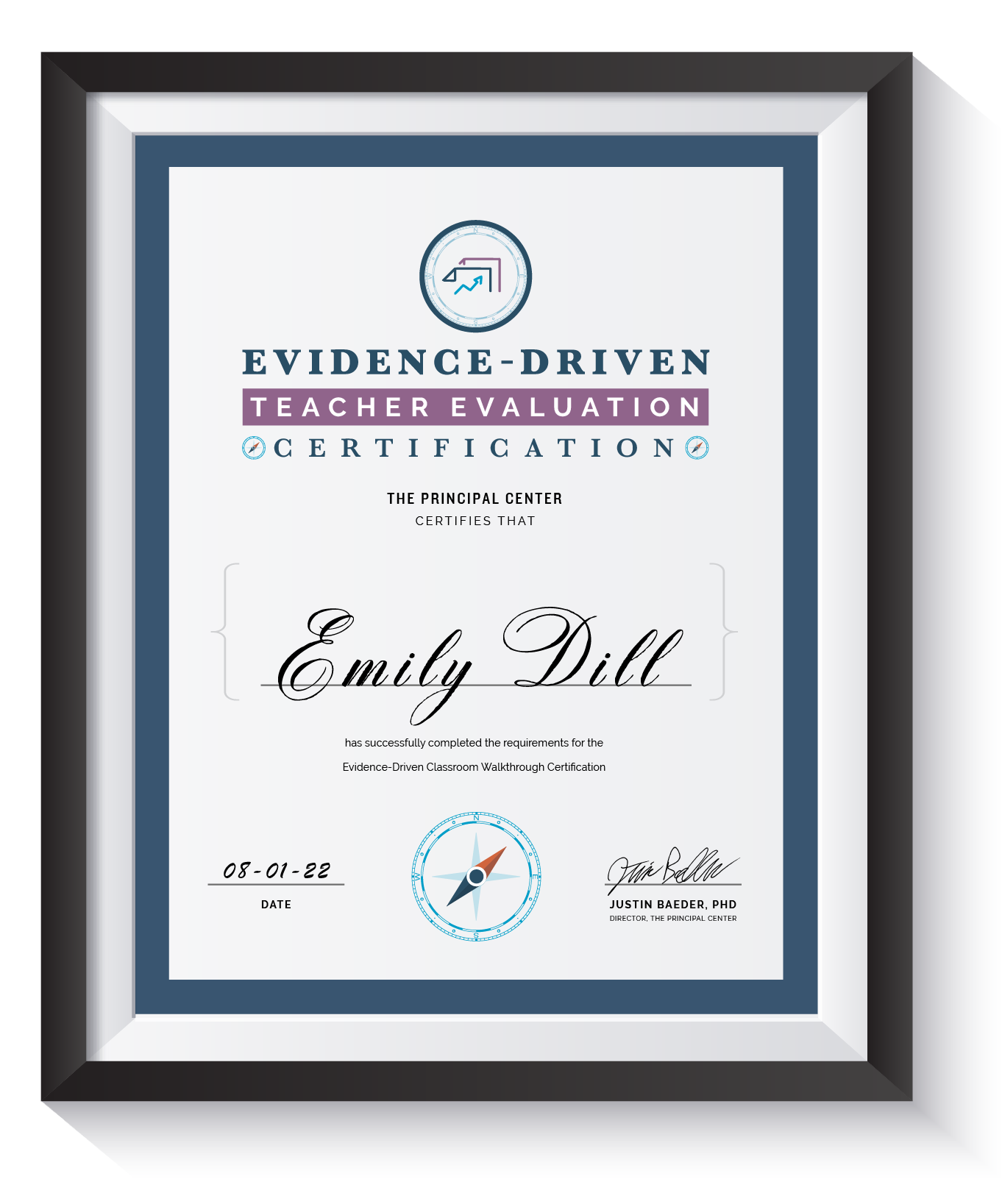
Evidence-Driven Portfolio Tasks
To earn your Certification, you'll assemble a portfolio of evidence with artifacts from real-world performance tasks, including:
There's no deadline or expiration date—complete the portfolio whenever it's convenient for you.
Program Format
Interactive Video-Based Professional Learning
The Teacher Evaluation Certification uses our two-way interactive video technology, allowing participants to both learn and respond via video—with no need to attend live sessions or watch replays. You can watch and respond directly from your computer or mobile device.
A New Kind of PLC—the Perpetual Learning Community
Our interactive, on-demand format enables a new kind of cohort experience. Instead of learning alongside only your colleagues who are able to participate at the same time, you can share your learning with everyone in the program—regardless of schedule. You'll be able to see and hear others' responses to reflection prompts, contribute your voice, and challenge your thinking with diverse perspectives.

Interactive Checks for Understanding
The Teacher Evaluation Certification is organized into short, self-paced sections that allow you check your understanding in real time.
Need more review? No re-watching needed—clarifications, extra examples, and alternative explanations are built in.
Module Transcripts
To help you review your learning and find key concepts quickly, you'll get complete transcripts of all training modules.
You can download, search, and even print these professionally formatted PDF transcripts for easy review without re-watching videos.
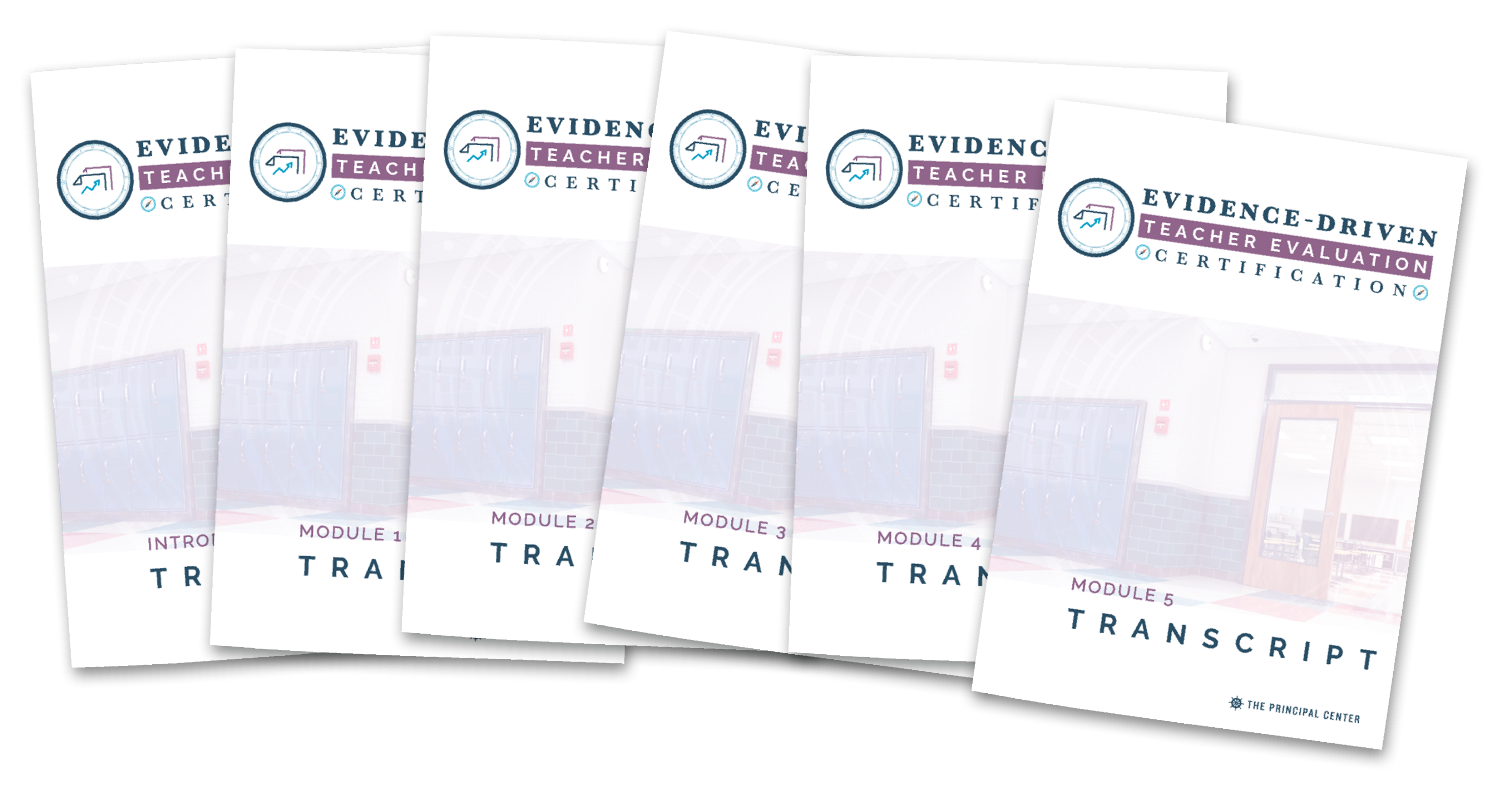
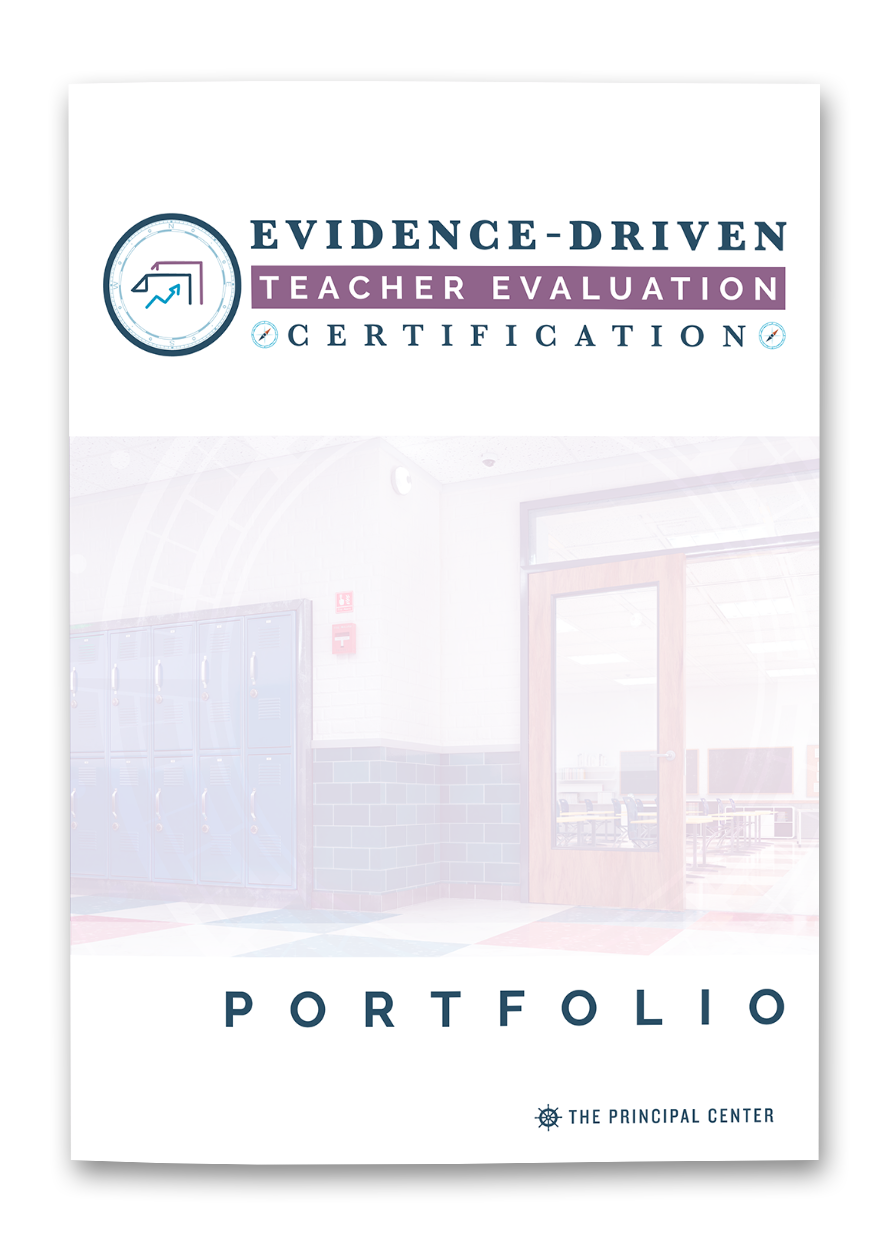
Certification Portfolio
To earn the Certification, participants compile a portfolio of evidence including records of their goal-setting work with teachers, formal observations, and written artifacts to demonstrate their instructional leadership.
While some components can only be completed while school is in session, the Portfolio can be submitted at any time; the program includes lifetime access.
Audio Review
Prefer to listen, or want a quick review? You'll get a complete MP3 audio file for each module, so you can brush up on key concepts quickly, or pick up the learning again after a break.
Everything is yours to keep, with lifetime, on-demand access and no expiration dates or deadlines.
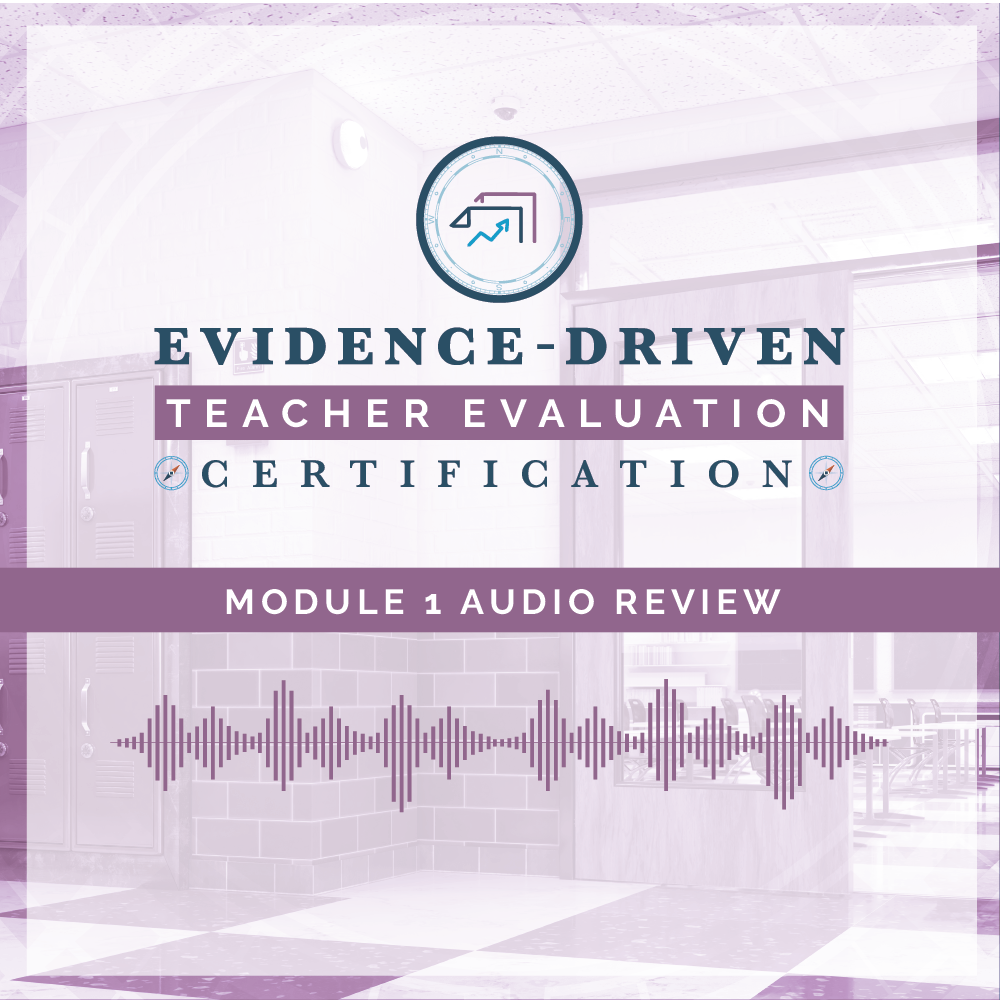
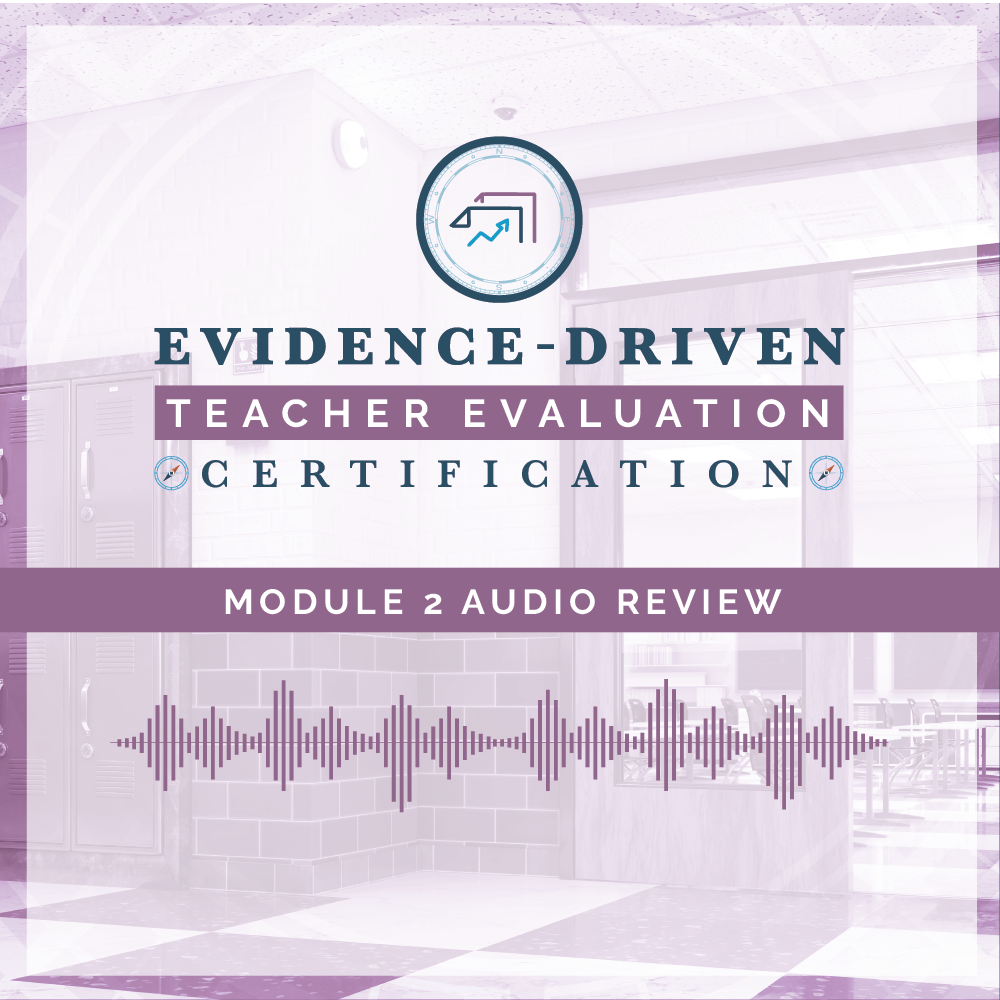
Who Is This Program For?
Principals
Principal Supervisors & HR Pros
Assistant Principals
Aspiring Administrators
About Your Instructor

The Evidence-Driven Teacher Evaluation Certification Program is led by Dr. Justin Baeder, Director of The Principal Center.
Dr. Baeder is author of Mapping Professional Practice: How to Develop Instructional Frameworks to Support Teacher Growth as well as Now We're Talking! 21 Days to High-Performance Instructional Leadership (both published by Solution Tree), and creator of the Instructional Leadership Challenge, which has helped more than 10,000 leaders in 50 countries make a daily habit of classroom visits.
He holds a PhD in Educational Leadership & Policy Studies from the University of Washington, and helps senior leaders in K-12 organizations build capacity for instructional leadership
Bonuses
When you enroll in the program, we'll include even more to help you succeed:
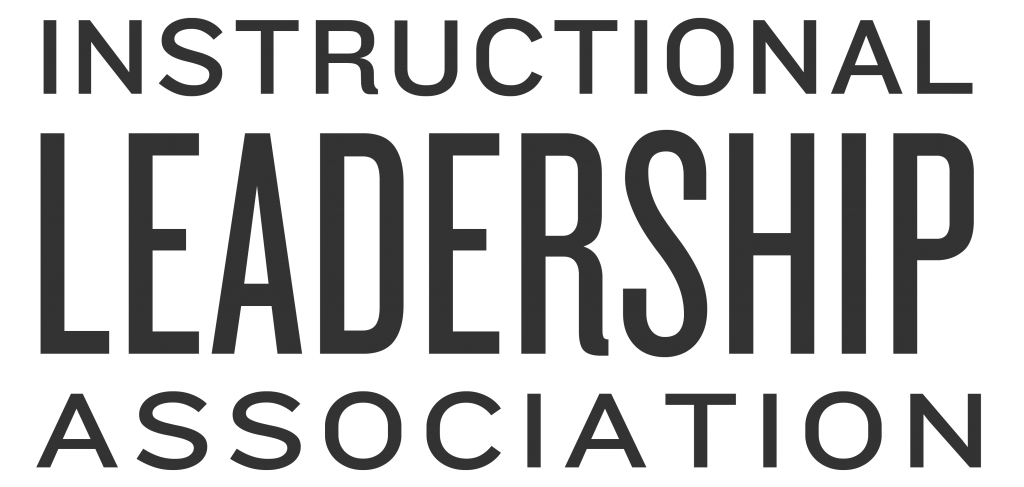
12-Month Leadership Association Membership ($1,188 value)
Lifetime ILA Membership ($9,990 value)
Our tools and trainings help you build capacity for instructional leadership, with new resources each month, plus Repertoire, the professional writing app for instructional leaders
Concierge Setup of Repertoire App

The Instructional Vision Institute
You'll get instant access to the 2-part Instructional Vision Institute program, so you can develop your own instructional frameworks for professional practice. Like a teacher evaluation framework, an instructional framework breaks a practice into key components and levels of fluency, so you can provide teachers with a clear rubric outlining shared expectations.
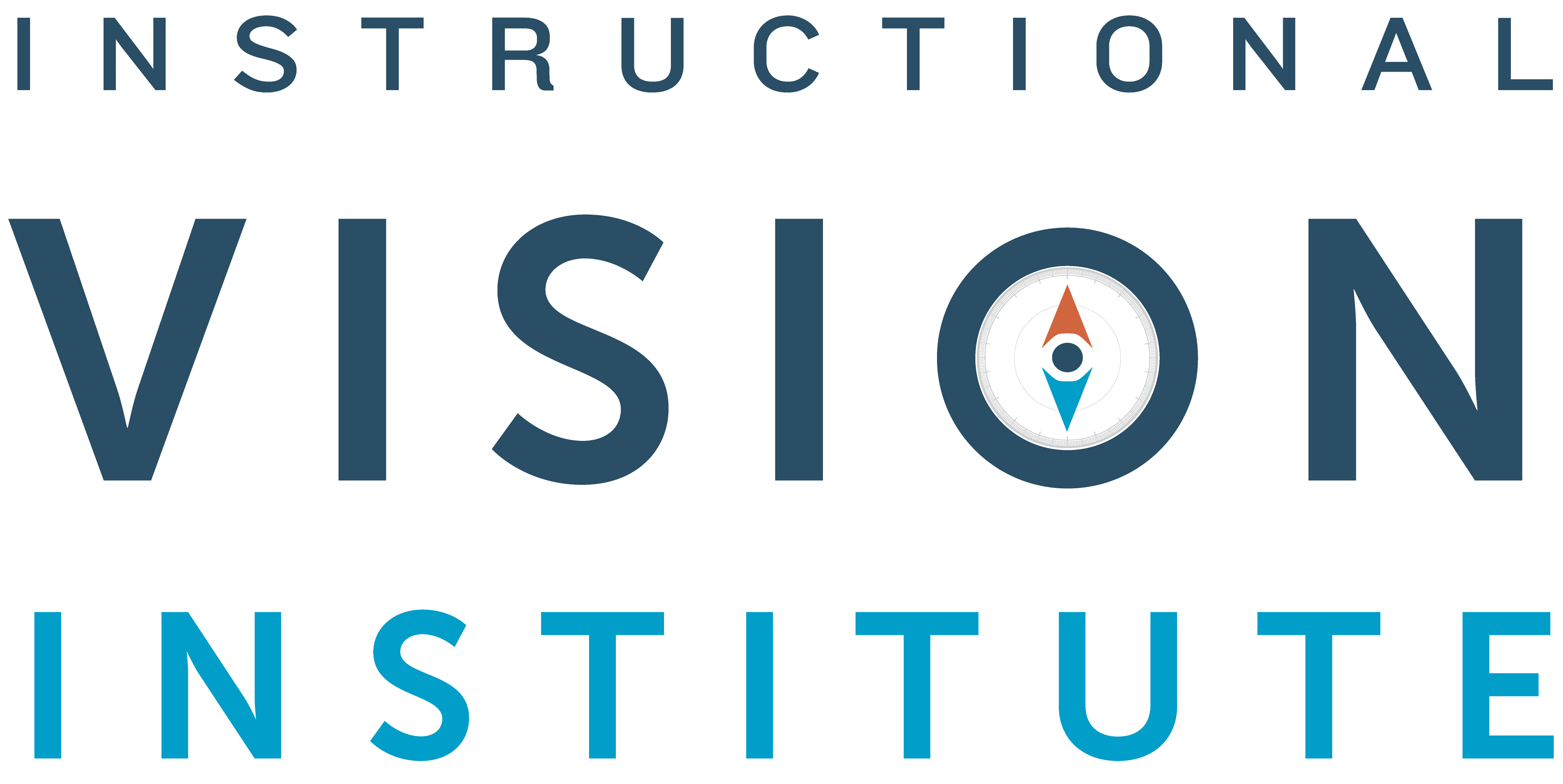
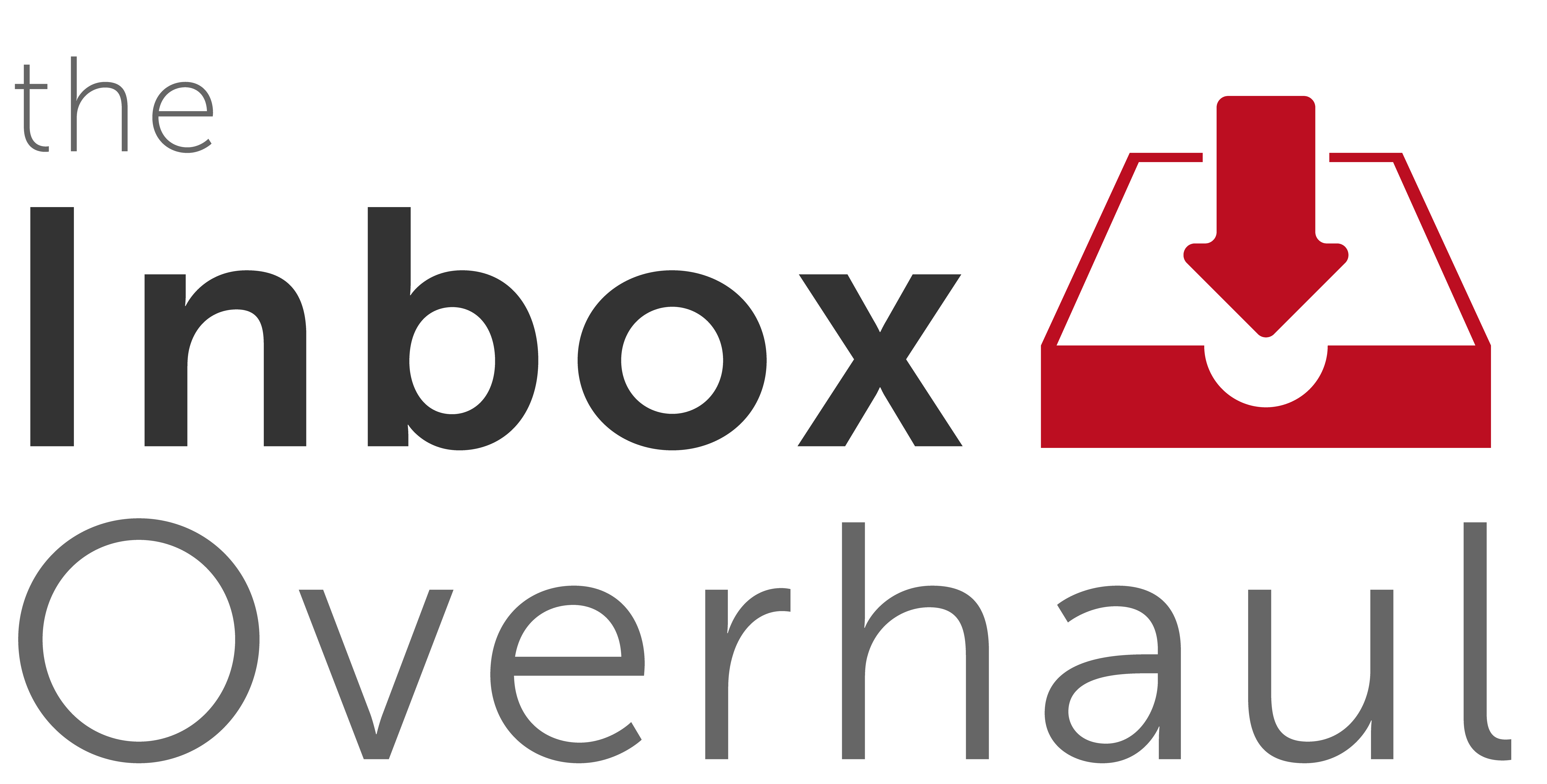
The Inbox Overhaul
Is email keeping you out of classrooms? An out-of-control inbox can be stressful and overwhelming. If you're ready for an Inbox Overhaul, this program will help you get your inbox empty every day, so you can use email the way it was intended—as a powerful communication tool.
Working with Office Staff & Your Admin Team
Office staff and other administrators on your team are crucial to your success in getting into classrooms. In these two bonus trainings, you'll learn how to work as a team, so you can cover for and support each other, and still get into classrooms every day.
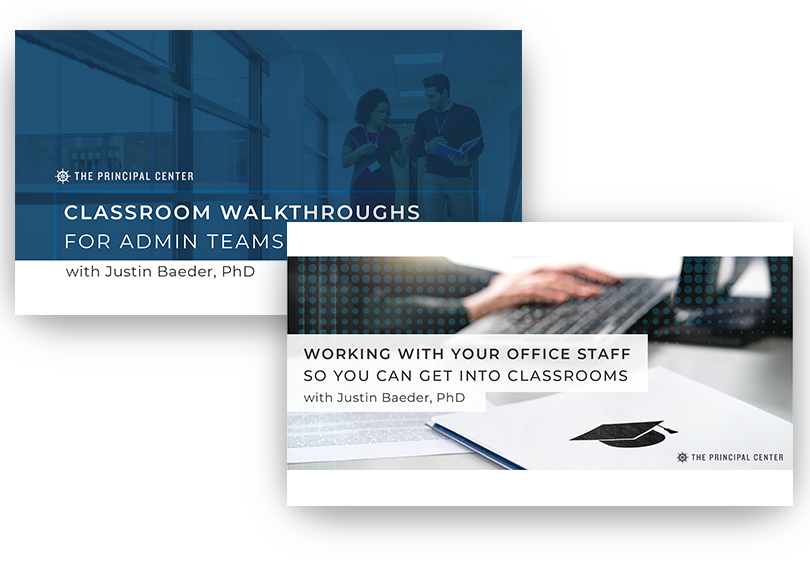
Money-Back Guarantee

The Evidence-Driven Teacher Evaluation Certification Program will dramatically strengthen your instructional leadership skills, and allow you to provide highly effective feedback to teachers at all skill levels.
We're fully confident that it's the most powerful professional development for instructional leaders anywhere—but don't take our word for it. Try the program for yourself, and experience the transformation that it brings to your leadership.
If you're not 100% satisfied with the our program for any reason, contact us within 30 days for a full refund.
Full Certification Program
The Evidence-Driven Teacher Evaluation Certification
$1999
Frequently Asked Questions
Yes, we offer a substantial discount on our regular individual rate for groups of two or more. See our registration form for pricing details.
Your purchase includes lifetime access to the Evidence-Driven Teacher Evaluation Certification Program.
You can go through the program as many times as you'd like, and complete the Certification component whenever you want.
Yes, this approach is compatible with any teacher evaluation system. Participants will have access to our Repertoire Content Creator app, which makes it easy to take evidence-rich notes using the specific vocabulary of a shared instructional framework. Our members use a wide range of frameworks, including:
- Danielson
- Marzano
- Stronge
- Marshall
- T-TESS
- AITSL
and many others.
The Evidence-Driven Teacher Evaluation Certification signifies a deep knowledge and demonstrated practice of effective teacher supervision and evaluation.
Prospective employers can be confident that candidates who hold the Certification will be instructional leaders who get into classrooms every day, have feedback conversations that change teacher practice, and have a deep understanding of their school's strengths and opportunities for improvement.
This program uses our innovative, proprietary model of professional learning—a PLC for the future of professional development. In our Perpetual Learning Community™, you'll be able to interact with the ideas and thinking of other participants, even if they're completing the program on a different timeframe.
Because your ideas are uploaded to the course, it gets better and better as more people complete it. On your second time through, you'll find new ways to sharpen your thinking and hone your practice.
